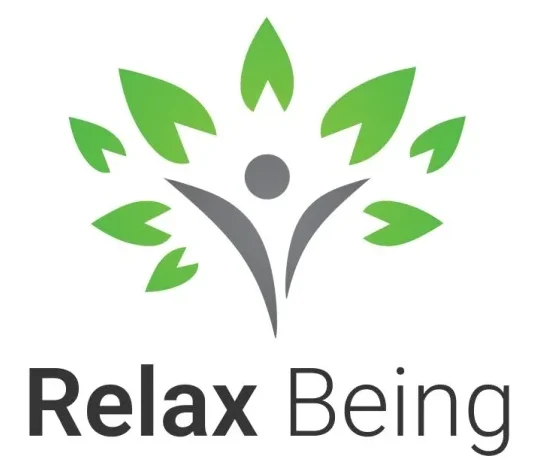Common Myths about Mental Health
Understanding how mental health works is not always simple, especially when societies and cultures are constantly changing and evolving. Across the World, different traditions carry myths that are so stubbornly embedded in daily lives that even when studies or the World Health Organization share facts, these stigmas remain. For example, many forget that 1 in 4 people will experience a condition at some point, making it a common part of human experience rather than something rare or shameful. I remember in my own circle, a close friend was quietly experiencing an illness, and despite having access to resources, the subject was so misunderstood that proper treatment was delayed.
That is why debunking what many assume to be true becomes crucial. These outdated views can feel almost intractable, but once a common myth about mental health is debunked, the path to healing looks less challenging. I once figured that my own needs to learn about these topics were not just personal, but necessary to support others. When we start debunking common myths about mental health, we slowly open doors to compassion, better awareness, and stronger communities worldwide. Understanding common myths about mental health is essential for breaking stigma.
Debunking common myths about mental health
From my years of working in mental health awareness, I’ve seen how common myths about mental health can shape the way people view themselves and others. Some beliefs are so prevalent that they continue to affect communities globally, creating barriers to open conversations. A few of these are largely based on fear rather than facts, which is why challenging them becomes one of the most powerful ways to bring about change. When I first started speaking publicly about my own struggles, I realized how quickly sharing personal stories can break down false ideas and help others feel less alone. Recognizing common myths about mental health early helps individuals feel supported.
At the same time, we need to actively fight the stigma attached to mental health by rethinking the narratives we pass on. In my experience, correcting misinformation with compassion is more effective than confrontation. Every time we replace judgment with understanding, we weaken old patterns and open space for acceptance. It may not seem like much at first, but even small acts of honesty and support create ripples that challenge what was once considered untouchable truth.
Myth 1: “Having a mental illness means you’re weak.”
From my years of speaking openly about mental health, I’ve seen many people believe that facing struggles with the mind is a sign of weakness. But that idea could not be further from the truth. A mental illness is often the result of a complex mix of genetics, trauma, stress, brain chemistry, and even the environment around us. Just like a physical illness, it can affect anyone, no matter their character or background. When I first shared my own experience, I realized that opening up required more strength than staying silent.
People sometimes forget that living with mental health conditions is not about failing but about managing challenges that are often invisible. What may seem like weakness to outsiders is actually a reflection of deep strength and resilience. The mix of causes—ranging from genetics and brain chemistry to stress, trauma, or even the environment shows us that these conditions are not about personal flaws. Instead, they are a natural part of human health, just as much as any physical illness, and facing them highlights the courage it takes to keep moving forward. Debunking common myths about mental health starts with understanding this truth.
Myth 2: “They’ll Judge Me or Think I’m Crazy.”
When I first reached out to a hotline, I worried I would be judged, labeled, or even pathologized for my confusing emotions. In moments when life felt like it was falling apart, I feared that opening up about my suicidal thoughts would bring only criticism instead of help. But what I discovered was the opposite hotlines exist to offer safety, compassion, and understanding. The counselors are trained to truly listen without judgment, and they know that behind every call is a human story filled with struggles that deserve care, not blame. Recognizing common myths about mental health helps people understand that support is available.
From my work in Mental health awareness, I’ve seen how many people feel ashamed or afraid to seek support because they expect to be judged or misunderstood. The reality is that these services are there to understand, not to harm. When you share your story, you are not weak, you’re taking a brave step toward healing. I’ve heard from countless people who once thought they were falling apart, but after talking with supportive counselors, they realized they were simply facing challenges that every human might go through at some point. The truth is, reaching out is not about being “crazy” it’s about being strong enough to choose connection over silence. Understanding common myths about mental health helps reduce this fear.
Myth 3: “Only medication works — therapy is unnecessary.”
In my years of exploring mental health, I’ve often seen people believe that medications alone always work for every individual. But the truth is, no one-size-fits-all treatment exists because people’s conditions can vary widely. Some may respond well to medicine, while others may prefer psychotherapy or a combination of both. It’s important to understand that each approach has its place, and what suits one person might not suit another. Recognizing common myths about mental health can guide better treatment choices.
From my personal experience working with a professional, I’ve learned how valuable it is to decide collaboratively which path to follow. When people openly share their concerns, a mental health professional can help determine the approach that suits them better. Sometimes that means using medicine, sometimes therapy, and often a mix of both. What truly matters is finding what helps the individual heal in a way that feels safe and effective. Recognizing common myths about mental health ensures people choose the right path without stigma.
Myth 4: “Children can’t have mental health problems.”
Many people assume young children cannot have mental health concerns, but research and my own work with families prove otherwise. Even at an early age, warning signs can appear such as sudden mood changes, withdrawal from friends, or difficulty focusing in school. These challenges are not just “phases”; they may point to clinically diagnosable conditions. The Centers for Disease Control and Prevention (CDC) highlights that nearly half of mental disorders first show up before a person turns 14-years-old, and about three-quarters begin by age 24. This means kids and teens can face problems like anxiety or depression that directly affect their developmental needs if ignored.
From my experience, I’ve seen how biological, psychological, and social factors all play a role in shaping these challenges. For example, a child’s interaction at school or at home can either reduce or increase risks, while statistics remind us how common these struggles really are. That’s why it’s important for children to receive intervention and support early on, so these issues don’t end up interfering with growth and daily life. Mental health conditions in children are not rare “adult problems” ; they are real, impactful, and deserve attention just as much as any other health issue. Addressing common myths about mental health ensures children get early support.
Myth 5: “People with mental illness are violent or dangerous.”
In my years of working in awareness campaigns, I’ve often seen how misinformation shapes public attitudes. A common belief is that people with mental illness are more likely to show violent behavior. The fact is very different. Research shows that only about 3%–5% of violent acts are attributed to individuals living with serious mental illness. In reality, people with severe mental illnesses are 10 times more likely to become victims of violent crime than the general population. This misunderstanding not only creates fear but also adds to the harmful stigma surrounding mental health problems.
From my professional experience, I’ve seen that causes of such assumptions seldom come from real evidence but instead stems from media portrayals and lack of understanding. Most individuals with mental health conditions are able to maintain personal, social, and occupational functioning, and many lead productive lives. This highlights the urgent need for improving mental health literacy on a global scale. Mental health literacy entails learning how to maintain good mental health, recognizing mental health disorders, understanding sources of treatment, and knowing when to seek help. Such awareness contributes to the reduction of stigma and opens the door for better support for those struggling with mental illness. Recognizing common myths about mental health can reduce fear and stigma.
Myth 6: “It’s Only for Adults.”
When I first began speaking about mental health, I realized many still assume it’s something “serious” that only adults deal with. The truth is that Teens and young people often face challenges just as heavy, sometimes even more. Over the years, I’ve seen how frequent stress, peer pressure, and family struggles can affect those under 18, yet many stay silent because they think help isn’t for them. But help exists and it’s often geared specifically toward youth.
For example, the 988 number now connects callers directly to crisis lines with specialized support when needed. Some organizations like Teen Line and The Trevor Project actively serve people who are struggling, offering trained users on the other end who truly listen. These hotlines aren’t just for emergencies; they’re lifelines for connection and understanding. Having worked alongside such services, I’ve witnessed how they remind young voices that support is real, personal, and always within reach. Understanding common myths about mental health can encourage young people to seek help.
Myth 7: “Mental health struggles indicate a sign of weakness or character flaw’’
When I first started working with adolescents and young adults, I noticed how many believed that having mental health conditions meant they were somehow weak or “failing.” But through years of supporting teens and listening to their stories, it became clear that these issues are not about flaws in character. They often arise from a complex interplay of genetic predispositions, brain chemistry, hormonal changes, and environmental factors like stress, trauma, and social pressures. Even physical illnesses can leave someone more vulnerable to challenges that affect their overall well-being. The truth is, a significant percentage of people, including those at the peak of their human experience, find themselves experiencing these struggles at some point.
What is truly uncommon is living a life untouched by ailments or disorders. Yet, the social stigma around recognizing the need for help makes many hesitate. I’ve often told my students and patients that asking for support is not weakness, it is courage and strength. Applying logic, if we don’t shame people for seeking appropriate attention and care for broken bones or chronic pain, why should it be any different for the mind? Mental struggles deserve the same level of respect and response, and dismissing them only prevents people from receiving the attention they need. Debunking common myths about mental health reinforces that asking for help is courage.
Where do we go from here?
From my years of working in awareness programs, I’ve seen how low mental health literacy often creates fear, isolation, discrimination, and even pushes people towards unregulated, unethical fixes offered by quacks or shamans. This lack of knowledge leads to social withdrawal, instead of seeking effective support that could truly improve lives. I once met a young man who delayed getting proper care because he thought therapy was a sign of weakness, but when he finally received timely, evidence-based treatment, he realized it was actually his greatest strength. Experiences like his encourage us to seek help earlier and to empower people to recognize symptoms in themselves and in others.
Breaking free from silence means learning to reduce judgment and to strengthen community bonds. When we fight stigma, we begin to understand that mental well-being is not just a personal issue, but also a social and systemic problem. Change starts with recognizing our role in maintaining or rejecting common myths about mental health. By holding honest conversations, sharing accurate information, and pointing people to real resources, we create a ripple effect that goes beyond individual healing. I have noticed in group sessions that making space for compassion and truth helps those struggling feel seen and less alone.
It is important to remember that supporting someone can begin with a simple ask: “Do you need help?” Choosing therapy or reaching out for care should never be hidden. It shows courage. When friends or families seek help, they are not showing weakness, but instead proving resilience. Through collective effort, where seeking treatment is normalized, and support is consistent, we build a stronger culture of healing that welcomes openness rather than silence.


